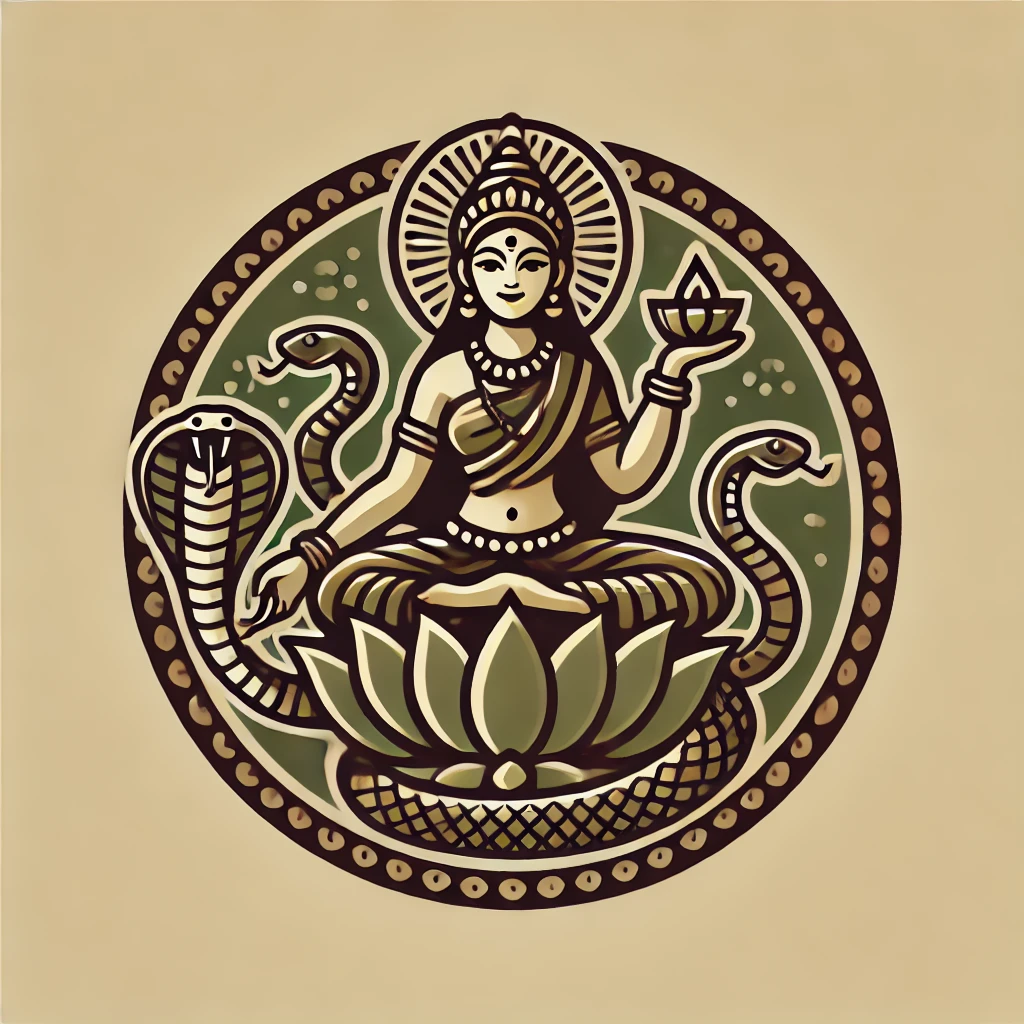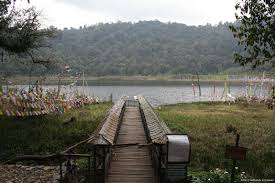Khecheopalri Lake, originally known as Kha-Chot-Palri, is a lake located near Khecheopalri village, 147 kilometres west of Gangtok in the West Sikkim district of the Northeastern Indian state of Sikkim.
Khecheopalri Lake, located in the West Sikkim district of India, is one of the most sacred and serene lakes in the state. Known for its religious significance, the lake is revered by both Buddhists and Hindus. It is a major pilgrimage site and is also popular for its scenic beauty and peaceful atmosphere.
- Geographical Location
Location: Khecheopalri Lake is situated near the town of Pelling in West Sikkim. It lies at an altitude of about 1,700 meters (5,600 feet) above sea level and is nestled amidst dense forests and hills.
Distance from Key Towns:
Pelling: 34 km
Gyalshing: 24 km
Gangtok (the capital of Sikkim): About 150 km
Coordinates: 27.3772° N, 88.2261° E - Religious Significance
Buddhism and Hinduism: The lake is sacred in both Buddhist and Hindu traditions. According to local beliefs, it is regarded as a “wish-fulfilling lake” and is deeply revered by the Lepcha and Bhutia communities of Sikkim.
Monastic Connection: Khecheopalri Lake is closely associated with the revered Buddhist saint Guru Padmasambhava (Guru Rinpoche), who is believed to have meditated in the nearby caves. The lake is part of the Buddhist religious circuit in Sikkim.
Legends: According to local folklore, the lake was blessed by Buddhist deities, and it is said that the footprint of the Goddess Tara is imprinted on the surface of the lake. Another legend suggests that the lake was created when Guru Padmasambhava shot an arrow into the ground to show the location of the hidden treasures of knowledge. - Natural Beauty
Serene Atmosphere: The lake is surrounded by a thick forest cover that adds to the tranquility of the area. The peaceful environment and the pristine water of the lake make it a place of reflection and meditation for visitors.
Crystal-Clear Water: Despite being located in a forest, the water of Khecheopalri Lake is remarkably clean. A fascinating local belief is that birds residing in the forest around the lake pick up any leaves that fall on the water to keep it clear.
Scenic Views: The lush green hills around the lake, coupled with the backdrop of the Himalayas, provide a breathtaking view. The entire area exudes a mystical and sacred aura, enhancing its natural beauty.
No Boats or Swimming: As the lake is considered sacred, boating or swimming is prohibited. The quiet and undisturbed environment makes it an ideal spot for quiet contemplation. - Wildlife and Ecology
Birdwatching: Khecheopalri Lake is a haven for bird lovers. Many migratory and local bird species can be spotted around the lake, especially during the early morning and late afternoon hours. The forested area around the lake is home to various species of birds and small mammals.
Rich Flora: The surrounding forest is rich in biodiversity, consisting of dense vegetation with ferns, orchids, and bamboo groves. The region is part of the Khangchendzonga Biosphere Reserve, which is a UNESCO World Heritage site. - Festivals and Rituals
Maghe Purne Festival: One of the major religious festivals celebrated at Khecheopalri Lake is Maghe Purne (or Chotrul Duchen), which occurs in the first quarter of the year. Devotees from across Sikkim and neighboring regions come to offer prayers and float butter lamps in the lake. It is believed that the lake’s spiritual powers are at their peak during this time.
Pilgrimage Site: Throughout the year, pilgrims visit the lake to make offerings, light candles, and pray. Buddhists consider the lake one of the 108 sacred lakes, and they believe it fulfills the wishes of those who come to it with a pure heart. - Nearby Attractions
Khecheopalri Monastery: Located near the lake, this monastery is a small, peaceful Buddhist sanctuary. The monastery offers a stunning view of the lake and the surrounding mountains.
Pelling: Just a short drive from Khecheopalri Lake, Pelling is a well-known tourist destination in Sikkim. Pelling offers panoramic views of Mount Kanchenjunga and is a base for exploring several other attractions like Pemayangtse Monastery, Sangachoeling Monastery, and the Rabdentse Ruins.
Kanchenjunga Falls: These impressive waterfalls are located a short distance from the lake and are a popular stop for visitors on their way to or from Khecheopalri. - Trekking and Adventure
Trekking: The area around Khecheopalri Lake offers great trekking opportunities. There are short treks from Pelling or Yuksom to the lake, which pass through beautiful forests and traditional Sikkimese villages. Some trekking routes also offer views of the majestic Mount Kanchenjunga.
Pilgrim Walks: Pilgrims and trekkers often combine visits to the lake with a walk to nearby sacred spots, including meditation caves and other religious shrines. - Accommodation
Homestays: Around Khecheopalri Lake, several small homestays and guesthouses offer basic accommodations for tourists. Staying in these local homestays allows visitors to experience the culture and hospitality of the Lepcha and Bhutia communities.
Camping: Although camping near the lake itself is not allowed, there are several spots nearby where visitors can set up camps and enjoy the serenity of the region. - Best Time to Visit
March to May (Spring and Early Summer): This is considered the best time to visit Khecheopalri Lake. The weather is pleasant, and the surrounding forests are in full bloom, making it ideal for nature walks, trekking, and photography.
September to November (Autumn): The post-monsoon season offers clear skies and stunning views of the Himalayas. This is also a good time to visit the lake, as the temperatures remain mild, and the region experiences less rainfall.
Winter (December to February): Winters can be cold in this region, but the clear skies offer unobstructed views of the mountains. The lake, however, remains serene and beautiful even during this time, though the nearby areas can be quite chilly. - Accessibility
By Road: Khecheopalri Lake is accessible by road from various towns in Sikkim. It is well-connected with Pelling, Gyalshing, and other nearby towns. Buses, shared jeeps, and taxis can be hired to reach the lake.
By Air: The nearest airport is Bagdogra Airport, located in West Bengal, approximately 160 km away. From Bagdogra, visitors can hire a taxi or take a bus to reach Khecheopalri.
By Train: The nearest major railway station is New Jalpaiguri (NJP), about 150 km from the lake. Taxis and shared vehicles are available from NJP to Pelling and Khecheopalri. - Cultural Importance
Sacred Rituals: Both Hindus and Buddhists come to the lake to perform rituals and prayers. A common ritual involves lighting butter lamps and offering them to the lake’s deity, seeking blessings and fulfillment of wishes.
Local Beliefs: It is said that any wish made while standing on the banks of the lake will be fulfilled. The lake is also believed to be home to the Naga (snake deity), and locals believe the lake’s water has healing properties. - Conservation Efforts
Preservation of Sacredness: Local communities and the government have taken steps to ensure that the sanctity of the lake is preserved. Visitors are prohibited from polluting the lake, and activities such as swimming, boating, or fishing are strictly forbidden.
Eco-Tourism Initiatives: Khecheopalri Lake is a part of Sikkim’s eco-tourism initiatives, which aim to promote sustainable tourism while preserving the natural and cultural heritage of the region.
Summary
Khecheopalri Lake is not just a place of natural beauty but a deeply revered pilgrimage site, offering a spiritual experience for visitors. Its tranquil setting amidst the mountains, combined with its sacred significance, makes it a must-visit destination in Sikkim. Whether you’re seeking spiritual solace, natural beauty, or cultural immersion, the serene waters and sacred surroundings of Khecheopalri Lake provide a profound sense of peace and connection to nature.

